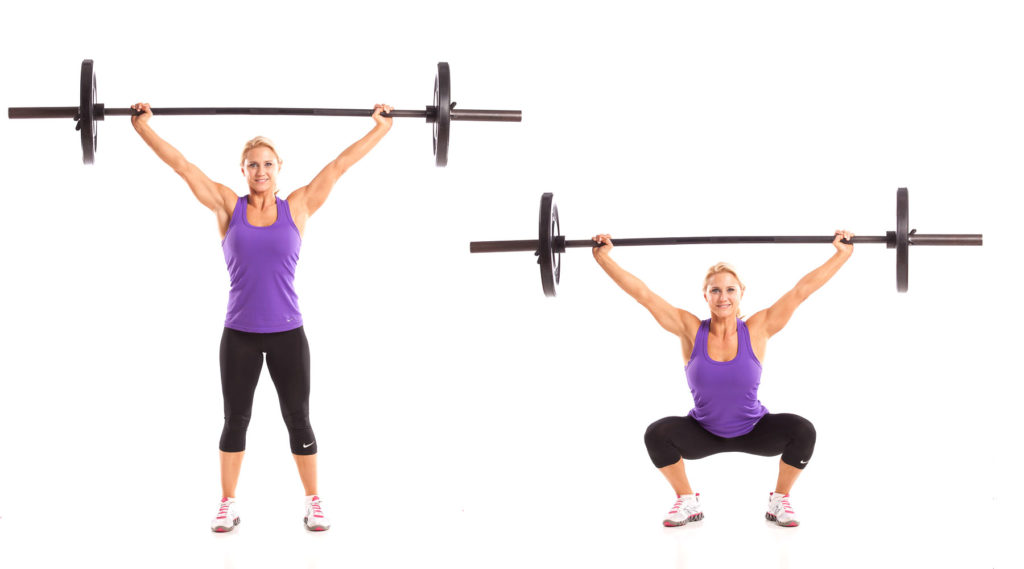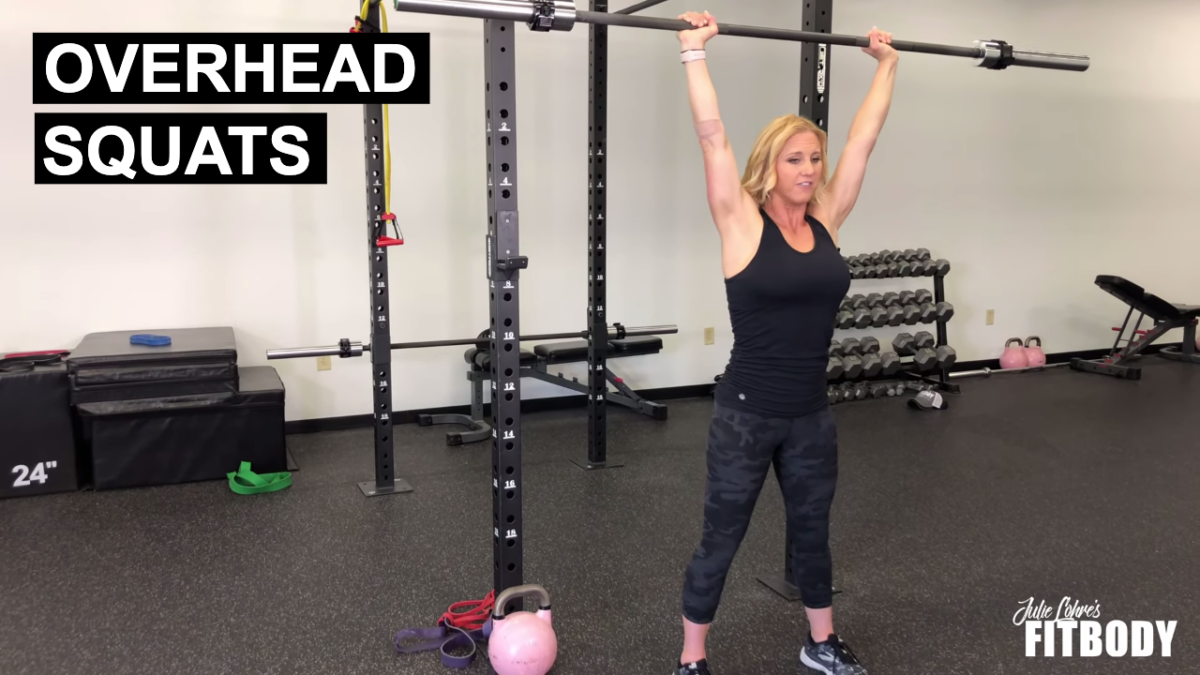The overhead squat is the ultimate core exercise to help develop overall athletic movement and strength. This full body functional exercise works both large and small muscle groups in unison and improves functional flexibility. It also develops and helps improve the standard squat by requiring attention to posture, movement, and stability. You simply cannot do the overhead squat wrong and not know it. The overhead squat is a great exercise to start small and work your way up. It requires complete and utter control of the weight and proper form throughout.
The overhead squat is a great tool for training the strength and stability of your shoulders and core. It’s also a great tool to mobilize your thoracic spine, ankles, and hips
What do overhead squats help with?
Improve Mobility, Stability, And Strength
Most people struggle with at least one of these mobility and stability issues:
– Tight, overlifted pecs that pull the shoulders and upper back forward.
– A rigid thoracic spine that can’t extend.
– A weak core.
– Inflexible hips, knees, and ankles.
Doing overhead squats can actually help relieve these issues. It’s important, though, that you start with basic positioning. Don’t throw plates on a bar and expect your body to be able to handle it, especially if you have any of the above issues.
In short: The overhead squat can turn you into a more limber, well-rounded athlete
Improve Hip And Ankle Mobility
If you struggle to do a back squat without your knees caving in or your heels coming off the ground, doing an overhead squat will make these issues even more apparent.
Most people lack the proper glute strength and hip mobility to make their posterior chain work efficiently. If you want to do an overhead squat, your calves, hamstrings, glutes, adductors, and lower back will need to pitch in to move the weight. Lean too far forward and you’ll put strain on your knees and rely too heavily on your quadriceps.
How to do an overhead squat?
To do an overhead squat, you’ll need a barbell or other rigid tubular implement. A broom, long pvc pipe or an unweighted barbell is great when first starting out. Depending on your strength, mobility, and comfort level with the movement, you may or may not need plate weights to add extra resistance to the exercise.
1. Stand upright and tall, your feet should be roughly shoulder-distance apart and keep your toes angled slightly outward. Place the barbell across the back of your shoulders, resting on your traps, as though you were about to perform a back squat. Alternatively you can also position it in the “front rack position” above your clavicle in front of your body. Position your hands slightly wider than you might for a back squat so that they’re closer to where the plates are loaded.
2. Take a deep breath and tighten your core to help keep your spine neutral and stable. Without bending forward or breaking your hips, bend your knees and drop your hips a few inches. In a quick but controlled movement, extend your knees and hips as you drive the barbell up over your head with your arms fully extending but without forcefully “locking” your elbows at the top. Allow your wrists to bend back slightly to prevent the barbell from rolling forward over your thumb joint. Check to make sure the barbell is positioned more or less directly over the center of your core and feet. If you were to draw an imaginary line from the barbell to the floor it would pass through your shoulders, hips and arch of your foot. You don’t want it positioned too far backward or forward, this can mess up your center of gravity and lead to form issues during the squat. This is the starting position of the overhead squat.
3. Keeping your core tight and your elbows fully extended, then slowly press your hips back and start bending your knees, squatting down as if you were trying to sit down. Make sure to keep your heels firmly planted and slightly more weight than the forward part of your foot. Ensure you keep your chest up, your eyes looking straight ahead or angled slightly upward, and your upper torso as lifted and erect as possible as you go down. If you find yourself leaning forward, the weight will also move forward and you’re likely to lose your balance or compensate by making other form mistakes. You want the weight to remain “stacked” directly over your center of your feet throughout the squat. Inhale as you squat down.
4. Squat as far as you comfortably can, even to the point where your glutes are almost grazing your heels. Of course, your hip mobility, strength, and flexibility will determine how far you can actually go down. If you can’t get to the “tush on the turf” position, simply go as deep into the squat as you can while maintaining perfect form. It’s okay if your knees extend past your toes slightly at the bottom of the exercise, just make sure your knees angle out so they’re aligned with your toes and not caving inward.
5. Using your glutes, hamstrings, quads, and core…press through your feet and fully extend your knees and hips as you return to the starting position. Keeping your arms extended and “stacked” over your body. Exhale as you rise to stand. Perform the movement slowly and with emphasis on form not speed.
6. Perform a set of prescribed reps then carefully bend your elbows and return the barbell to your shoulders. From there, rack the barbell or return it to the ground by lowering to hips first then using proper deadlift form to .

Julie Lohre demonstrates the Overhead Barbell Squat exercise

